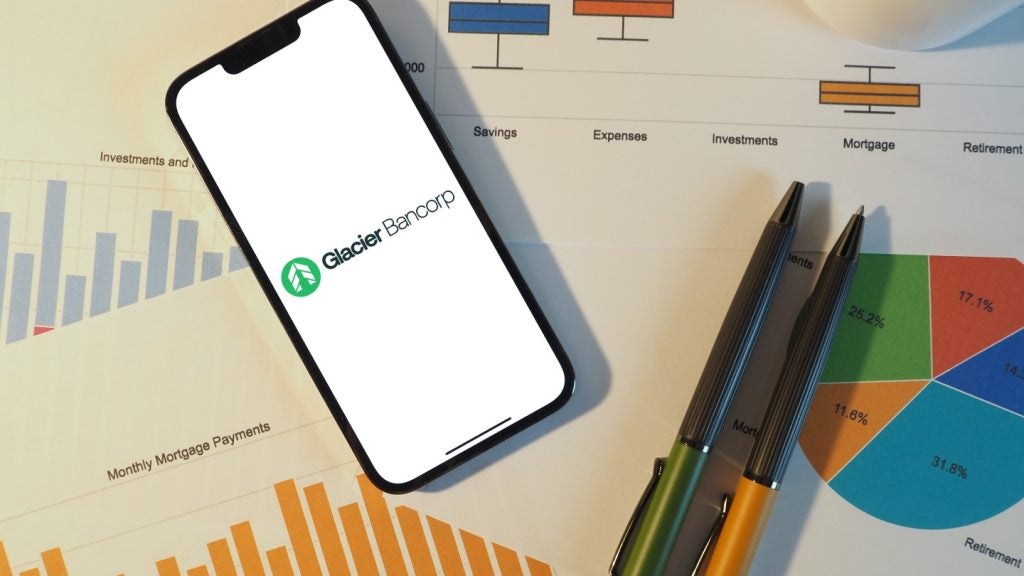banking market over the past 12 months has seen banks relaunching
their services, tailoring offerings to the next generation of
handsets – such as Apple’s iPhone – as well as preparing for future
contactless payment possibilities. Dan Jones, a reporter for
Retail Banker International,
investigates.
A year after the launch of the iPhone, both the Apple handset and
rival smartphones are now commonplace in the UK, opening up a more
accessible form of m-banking to the UK’s 47.5 million mobile phone
users.
With the technology in place, the onus is
now on the banks themselves to make their offerings compatible.
Most UK institutions’ direct banking services can now be accessed
via the iPhone, but compatibility with other smartphones remains an
issue (see table). Jenny Southwell, head of digital marketing at
First Direct, the direct banking subsidiary of HSBC, said the bank
is “also testing other browser based phones, such as the Nokia N95
and N96”, though it currently only offers an iPhone service.
First Direct has continued to stand out as
a pioneer of m-banking in the UK, maintaining a track record first
established in 1999, when it became the first UK institution to
launch text-message banking. The bank became the first in the UK to
offer iPhone compatibility in September 2007, two months before the
UK launch of the product. 
The arrival of more advanced handsets
means that the development of WAP-based services, a part of the
second stage of mobile banking evolution, is now coming to a close.
Nationwide Building Society, another early adopter of the iPhone,
announced in August 2008 that it was withdrawing its WAP banking
service, saying that “our current service is only available on a
very limited range of handsets. Discontinuing this service will
allow us to concentrate on developing online services which will
benefit more customers.”
The potential of the UK market, which
remains one of the most active mobile phone markets in the world,
is highlighted by Internet monitoring firm comScore. The company
has noted that some 29 percent of the UK’s mobile users – or almost
14 million people – use their mobile phone to access original
content online.
The iPhone is particularly relevant in
this context. A separate comScore study, published in July, found
that 80.4 percent of iPhone users in the UK, France and Germany use
the device to browse the Internet, compared with 32.2 percent of
smartphone users and 10.7 percent of the wider market.
Many banks remain uncertain as to the
exact nature of their iPhone capabilities, however. A spokesperson
for Lloyds TSB said that “our online banking service doesn’t
currently work on the iPhone but we expect that to change in the
coming months”, but such issues are often dependent on an
individual’s browser settings as much as intrinsic compatibility
failings.
How well do you really know your competitors?
Access the most comprehensive Company Profiles on the market, powered by GlobalData. Save hours of research. Gain competitive edge.

Thank you!
Your download email will arrive shortly
Not ready to buy yet? Download a free sample
We are confident about the unique quality of our Company Profiles. However, we want you to make the most beneficial decision for your business, so we offer a free sample that you can download by submitting the below form
By GlobalDataOn a cosmetic level, First Direct remains
the only UK bank to have made available an icon which customers can
install on their iPhone menu, enabling quick access to the online
banking site. In doing so it joins a number of overseas financial
institutions, such as Bank of America, Wells Fargo, Deutsche
Postbank and Australia’s ANZ, all of whom have taken advantage of
the iPhone’s open architecture system in their local markets.
Just 0.5 percent of First Direct’s
Internet customers, equivalent to 4,400 users, currently access the
service through the iPhone. But Southwell pointed out that the
disproportionately high number of First Direct customers who are
Apple Mac users represents a key demographic for the bank.
“We often find that those early adopter
customers are our most active customers, so it’s important we
please them, because they are the ones that interact with us the
most.”
Same experience
But the sense that smartphone technology
represents a new dawn for m-banking must come with the
acknowledgement that web browsing on a mobile is now almost
identical to doing so on a PC.
“We certainly see the iPhone as one of the
best ways that customers can currently access real time banking,
because it’s the same experience you can get on Internet banking,”
added Southwell.
The ability to perform transactions is
another key development: “text message banking gives
mini-statements and alerts on your account, which is great at
giving the customers information, but it is very much basic
information, whereas the iPhone actually enables customers to
transact on their account and move money around.”
First Direct has 380,000 users of
its SMS text service
As the fundamentals of m-banking and
online banking become indistinguishable, a likely future
differentiator for mobile is its ability to provide innovative
services to consumers.
The experiences of banks such as
Citigroup, which suffered from an especially poor take-up of its
mobile banking application in the US as a result of its decision to
use a closed proprietary interface rather than a browser-based
application, are likely to be sidestepped in future as banks
combine portable Internet banking with low-cost offerings that are
unique to the mobile phone.
One such example is the use of QR codes,
unknown in the UK banking sector but popular in more tech-minded
markets such as Japan, where they were first launched over a decade
ago. The codes, essentially a barcode that can be scanned by mobile
phone cameras, provides institutions such as Japan’s Shinsei Bank
with the ability to market Internet services through more
traditional channels without requiring customers to memorise
convoluted URLs.
“QR codes are a tactical marketing
technique that we are looking at. It’s an accessible format,” said
Southwell.
 Smaller-scale innovations such as this are increasingly
Smaller-scale innovations such as this are increasingly
being examined by UK banks, the development of wider mobile banking
services has by no means ended. Indeed, First Direct has launched a
new .mobi landing page, which may be leveraged using QR codes.
“Next year we’ll embark on a programme where we advertise on
posters, for example, which will link through to a .mobi webpage.
But at this stage we haven’t really promoted [the new
service].”
The page “is a more user friendly site
that you can access from non-browser mobile phones. It’s like the
old WAP site; mainly text and link based.
“We are looking at developing it further
with things like ATM locators. So we are still doing work on
mobile,” Southwell added.
One competitor following suit is Lloyds
TSB: the bank launched its own mobile banking revamp in October.
The new services “are unique in giving customers the ability to
move money between accounts through a Mobile Banking application”,
Lloyds TSB said in a statement. The service, does not, however,
allow customers to set up direct debits or make payments to other
bank accounts.
Research by ICM conducted in July 2008
showed that 74 percent of Britons use Internet banking to keep
track of their financing, with 60 percent wanting to be able to do
so on their mobile phone and 53 percent wanting to be able to
actively move money between accounts using their mobile.
“Technology is evolving at lightning speed
and with these changes come new demands from our customers and new
possibilities for products and services to meet their needs”, said
Catherine McGrath, director of current accounts at Lloyds TSB.
M-banking endgame
Southwell at First Direct believes that
the endgame for mobile banking could be through the adaptation of
contactless payment technology.
M-banking leaders in this regard include
Turkey’s GarantiBank, which began a successful contactless mobile
payment pilot in July 2007. That, however, involved customers
sticking smaller versions of existing contactless payment cards to
the back of their handsets. Southwell said integrated contactless
mobile technology is “probably three years away” from being
introduced to the UK market, but remained positive.
“Mobiles will become more and more
important as we look towards contactless technology. That kind of
technology – where you can embed card technology and chips within
your phone and swipe it for real time transactions, like on the
London Underground for example – is personally where I think the
mobile market is headed”.
The smooth introduction of contactless
payments is reliant on the creation of a system which satisfies all
parties looking for revenue share. Aside from the banks, mobile
operators, retailers and mobile phone companies are all contesting
their claims.
An absence of a sole agreed payment system
could result in problems reminiscent of those seen in the US mobile
banking market, where major institutions such as JPMorgan Chase
have attracted fewer than 100,000 mobile banking customers as a
result of its decision to use a closed proprietary interface for
its m-banking operations.
For now, contactless payment trials have
been restricted to card programmes, such as Barclays’ Barclaycard
OnePulse, and a one-year trial of MasterCard PayPass and Maestro
PayPass on the Liverpool public transport network.
“Once big cities like that start to roll
out contactless devices and it starts to become common in the cards
format I think we’ll make some headway with mobile phone operators,
so we can start installing chips in phones,” Southwell
predicted.







